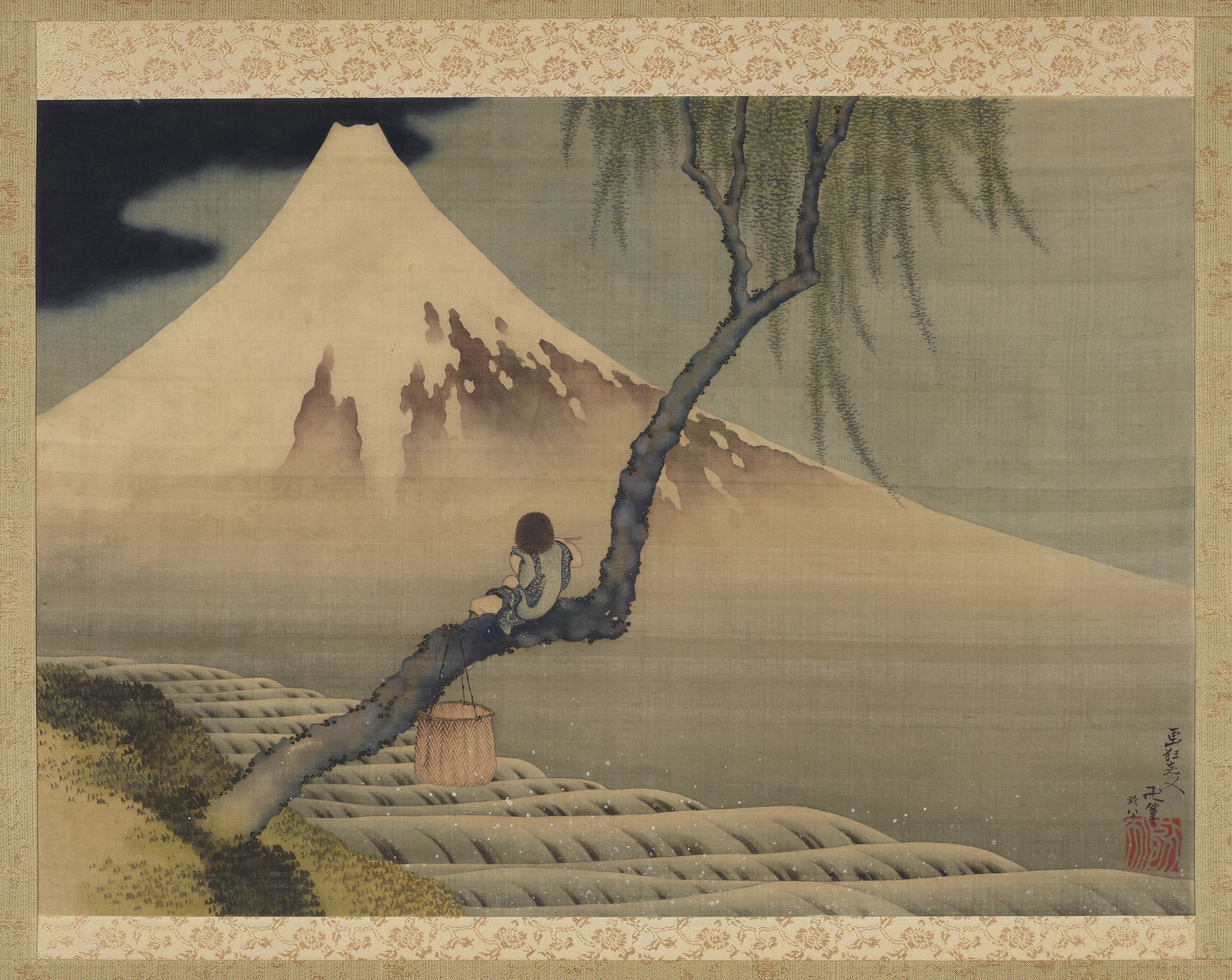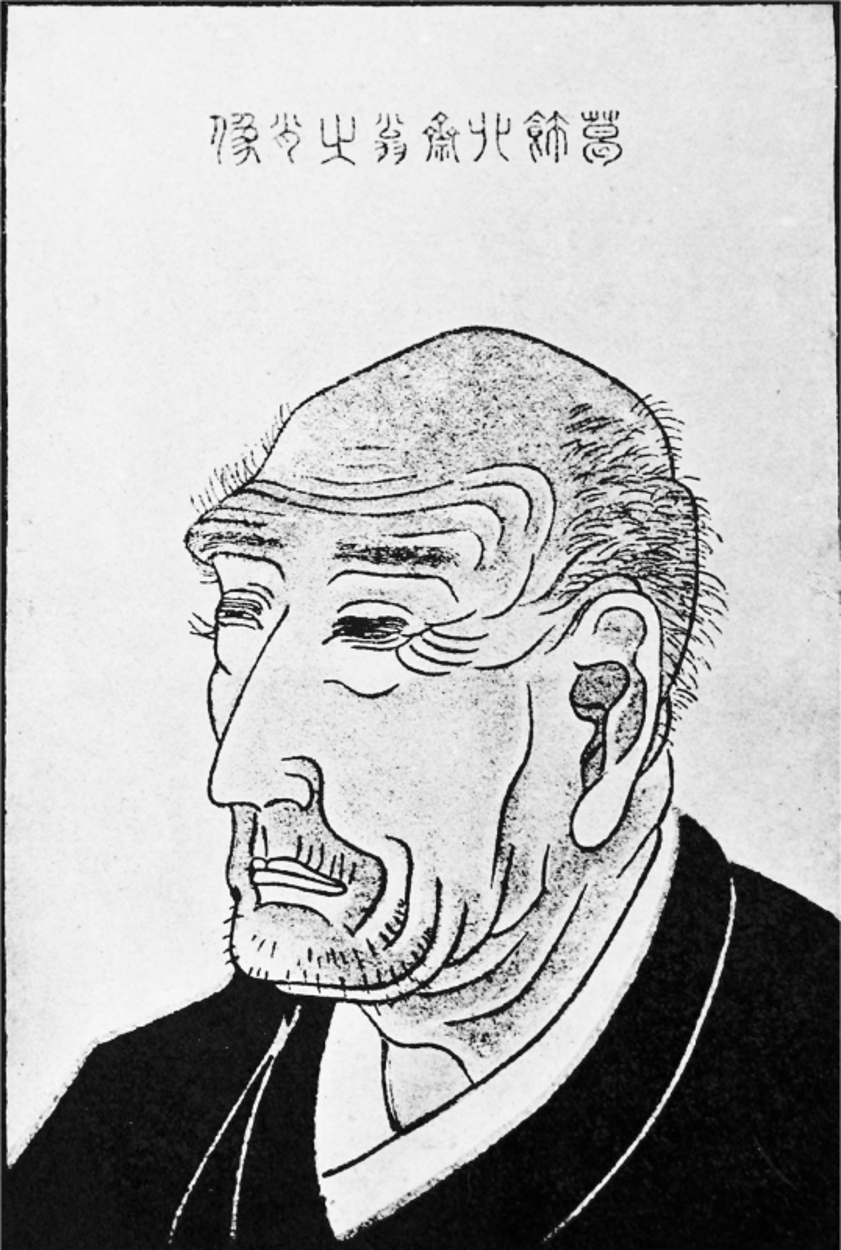Mount Fuji may be the most widely recognized symbol of Japan. The mountain and its name carry many meanings that are conveyed in Japanese by writing Fuji with different characters, such as a pair meaning "peerless." The highest mountain in Japan, Fuji's imminent power is contained in its seething volcanic core, hidden beneath its perennial cloak of snow. Regarded as sacred, Mount Fuji has been a site for religious pilgrimage, and ancient stories maintain that an elixir of immortality could be found at its peak. This painting frames the mountain in the bend of a willow that extends over a rushing stream. A young boy nestles in the tree, playing a flute while gazing at the mountain. This tranquil and engaging view of Fuji was one of hundreds produced by Hokusai during his lifetime. Here, at the age of nearly 80, the artist gives visual form to his quest for long life by portraying a young boy in the thrall of the immortal mountain.
A prolific and technically proficient painter, Hokusai had a special sympathy for common people, whom he often depicted in his paintings, prints, and illustrations for printed books. Here he employs thin washes of color almost without outline to bring forth the familiar form of the great volcanic mountain.
We present today's hanging scroll thanks to the National Museum of Asian Art.
P.S. These views are so lovely; they work better than any tranquilizer! Here are more. <3


 Katsushika Hokusai
Katsushika Hokusai